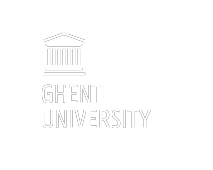Speaker
Description
The state of the neutral interstellar medium critically affects the galactic star formation process and baryon cycle. Cosmological simulations which emulate galaxy evolution for a statistical sample of galaxies typically do not consider the transition of atomic to molecular hydrogen in the cold neutral medium. To compare the simulation output to observations, the atomic and molecular fractions are calculated via postprocessing recipes. Since ultraviolet radiation photodissociates molecular hydrogen these recipes usually depend on the local UV field, which is not tracked in cosmological simulations. In this work we improve upon previous dust-free UV field calculations by applying the dust radiative transfer code SKIRT to the TNG50 simulation of the IllustrisTNG suite at redshift zero. With these realistic UV fields and the high-resolution TNG50 simulation we compute maps of atomic hydrogen for a statistical sample of 12'000 synthetic galaxies. We compare the simulated maps to data from the WHISP survey via non-parametric morphologies and the HI column density distribution function. While the overall agreement is very robust, residual discrepancies mostly in the concentration and M20 indices remain. We conclude that the high spatial resolution achieved by TNG50 is integral to reproduce the atomic gas observed in nearby galaxies.
